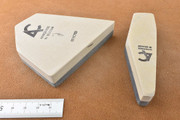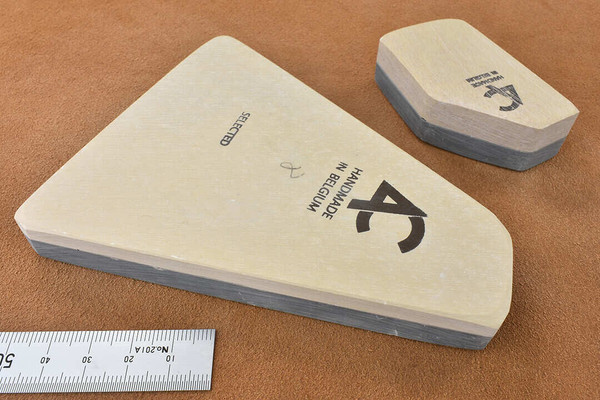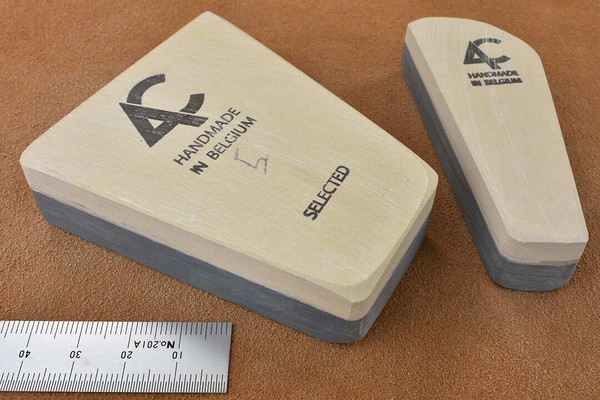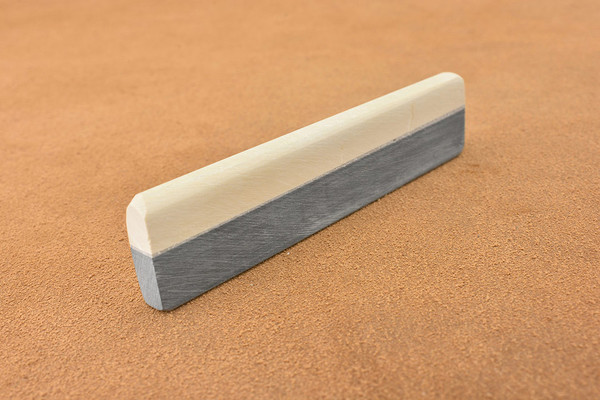The famous Belgian Coticule, irregular shaped slabs of selected yellow coticule whetstone bonded to a non-sharpening supporting layer of shale. Belgian Coticule bouts come in all different shapes and sizes - triangles, parallelograms, squares, pentagrams. The stones follow the natural shapes available in the rock so each one is absolutely unique, making boxes to fit them can be a fun project.
We supply each coticule with its own natural slurry stone, this works like a nagura to open the surface and raise a creamy slurry of sharpening grit.
We stock a wide range of sizes and each stone is individually listed so you can see exactly what you are buying, smaller stones are great for sharpening penknives, marking knives and honing the small irons of joinery planes, larger ones are more suitable for chisels, razors and bench plane irons.
What grit is coticule? In terms of where it fits into your sharpening regime, the answer is 4000 - 10,000 depending on how you use it.
Like wine and people, each piece of natural coticule has it's own individual characteristics, before very long you won't worry about grit numbers and will instead be concerned with technique - the interplay of slurry thickness and pressure to get the desired result from your particular stone.
At the two extremes, slurry with the consistency of double cream and moderate pressure gives the fastest cut, water only and the lightest possible touch gives the finest polish. Using your slurry stone and a spray bottle to manage the consistency and progressing through double, single, full cream, skimmed milk and water with progressively lighter pressure at each stage is the equivalent of working through the grits. The slurry will eventually blunt with use (how quickly this happens will vary from stone to stone) so rinsing the surface periodically and raising a fresh slurry will keep your coticule cutting efficiently.















